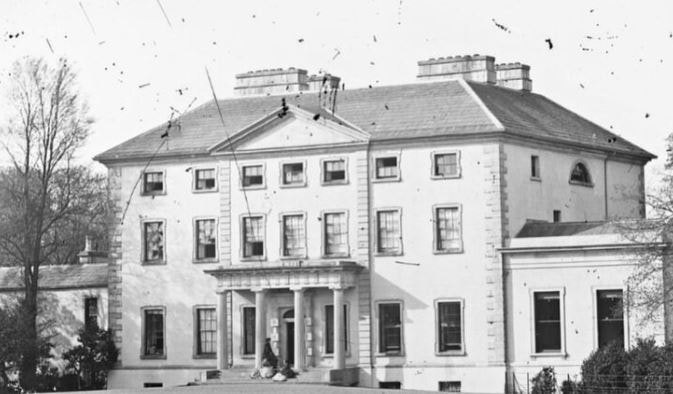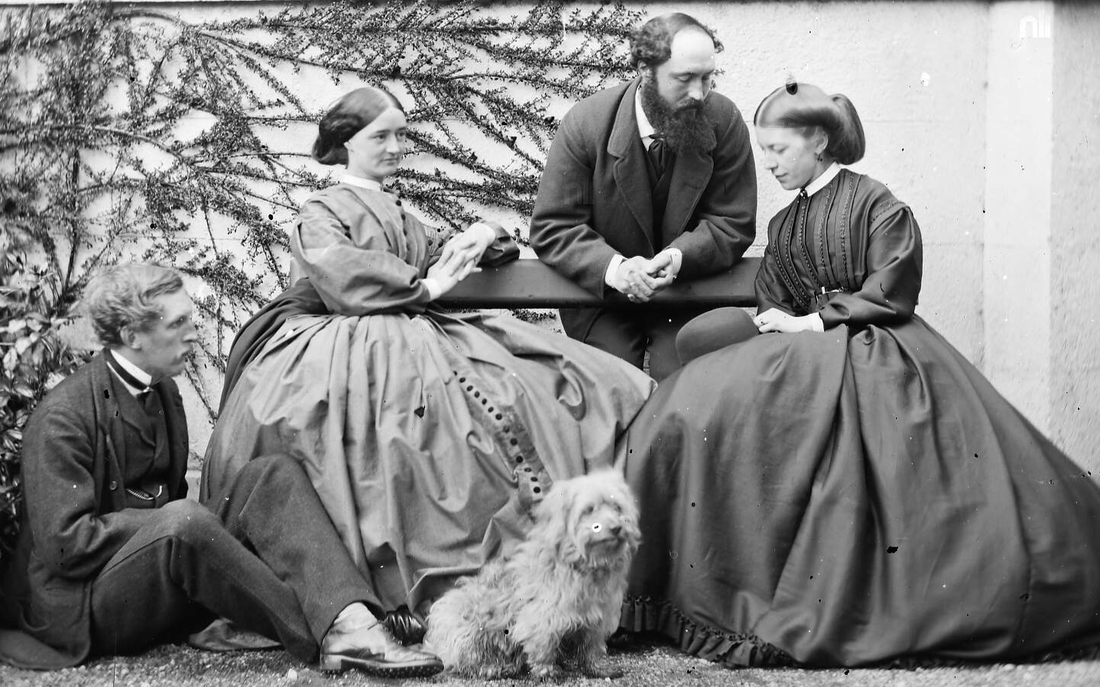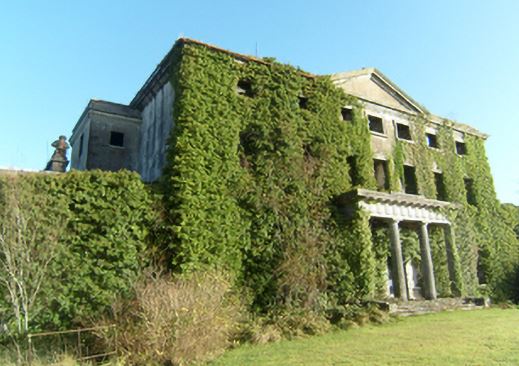|
By Barry Lally Some years ago I was privileged to open a photographic exhibition in the old public library on Ballinasloe’s Fair Green. It consisted of a selection of photographs from the Dillon Collection that had been acquired by the National Library in 1977. I remember remarking at the time on the exceptional quality of the prints, some dating back to the 1860s, and embracing practically every aspect of life on a landed estate in the latter half of the 19th century and the early decades of the succeeding one. Here we had family portraits featuring the ladies of the household in their voluminous crinolines, estate servants, tenants, farming operations and festive occasions: the vivid record of a bygone age. No professional had ever been employed, everything was the work of the Dillons whose story is surely worthy of recall. The Dillons of Clonbrock, Ahascragh, were the branch of a family descended from the Anglo-Norman Sir Henry de Leon who came to Ireland with the future King John in 1185. Thomas Dillon, an eminent lawyer and judge, bought the original Clonbrock estate from the widow of Tadhg O’Kelly in the 1580s. Over the following three centuries the Dillon estate expanded to become the third largest in County Galway, eventually reaching a maximum of 28, 246 acres with only the Marquis of Clanricarde’s estate and Lord Dunsandle’s being larger. Suspected of involvement in the Rebellion of 1641 because of their Catholicism, some of the family’s lands were confiscated by the Cromwellian authorities but were recovered in 1663 following the restoration of Charles II. After the Jacobite War the family survived an attempt by the Trenches of Garbally to get part of their estate as a reward for claiming that the Dillons had fought on King James’s side at the Battle of Aughrim. In the early 1700s, however, they were obliged to convert to the Established Church to avoid a threat to the integrity of their estate posed by the Penal Laws. Robert Dillon (1754 – 1795), known as “Beau Dillon”, was raised to the peerage of Ireland by the title of Baron Clonbrock in 1790. A man of extravagant habits, he spent much time abroad and set a pattern for his successors by a virtual unending sequence of travels to Europe, including London and Bath, as well as a four-month sojourn in Dublin each year at his Harcourt Street townhouse. He built Clonbrock House in the 1780s to a design by William Leeson.
His son Luke Dillon (1780 – 1826) inherited the title in 1795. When he left Oxford and returned to his estate he set himself to improve the place by buying books, pictures and furniture for the house. One lot of 14 pictures cost him a thousand guineas, and in 1800 he began to assemble the library, spending £738 on books over the next six years. Fond of music, he also had a good knowledge of paintings, tastes he indulged during a three-month continental tour in 1824. He was active against the Ribbonmen, agrarian terrorists, in 1819, and had “established a chain of signals by bonfires and patrols at the head of 40 well-armed followers every other night at least, and at any hint of the approach of these rascals a fire is lighted and 300 or 400 fellows are, or have been, in less than an hour at some specified rendezvous.” Unlike their more sober-minded neighbours the Trenches, whose only sporting interest was the promotion of cricket, the Dillons appear to have enjoyed an endless round of fox-hunting, shooting and yachting in both Ireland and England. They never practiced duelling, a vice almost exclusively confined to the minor landowners. Their wealth, however, failed to protect them from chronic ill-health which continued to plague them during the 19th century, necessitating prolonged annual stays at the French resorts of Arcachon and Pau. They earned a reputation as exemplary landlords, never resorting to mass evictions, whose well-run estate was complemented by a superbly-tended demesne, and who cultivated the goodwill of their tenants with lavish entertainments. Staunchly Tory and Unionist in outlook, the Dillons were said to have respected their tenants’ political opinions yet were known to issue instructions on whom to vote for at elections. The Third Baron seems not to have been universally popular. He, together with his gardener and his steward, received threatening letters in 1869. Infuriated rather than afraid, Clonbrock summoned his entire staff to inform them that if any injury should befall the two servants he would shut up his home and retire from Ireland, thus throwing them all out of employment. Relatively new and expensive in the 1860s, photography as a hobby could only be pursued by members of a well-to-do and leisured class like the Dillons. Augusta Caroline Crofton (1839 – 1928) had already developed a keen interest in photography by the time of her marriage in 1866 to Luke Dillon (1834 – 1917) who shared her enthusiasm, and three years later a studio and darkroom, known as the photographic house, was built at Clonbrock. Together they had three daughters and a son, all of whom became avid photographers and whose work in this field continued up the late 1920s. Though the estate was only slightly affected by the Land War of the 1880s, the fair rent fixing terms of the 1881 Land Act resulted in economic cutbacks, and in 1886 five servants were made redundant as a consequence. The Wyndham Act of 1903 offered very advantageous terms to landlords to sell and for tenants to purchase their farms. However, the Fourth Baron had a sentimental attachment to his estate and set his face against selling. On the other hand, his tenants, realizing that it would cost them less in annuities if they bought their farms than they would have to pay in rents, subjected the estate to extreme agitation between 1903 and 1907. In 1909 the Baron felt he had no alternative but to sell, and by the start of the First World War he had disposed of the majority of his tenanted lands for the rough equivalent in today’s money of €20 million. He invested in global stocks and shares which were disastrously affected by the Russian Revolution of 1917 and the 1929 Wall Street Crash. After 1929 the Dillons could no longer afford to employ servants. Robert had succeeded his father as the Fifth Baron in 1917 but died unmarried eight years later when the title became extinct. His sister Ethel (1880 – 1978) continued to reside at Clonbrock up to the 1960s. She seems to have been a lady of a conservative cast of mind. A favourite saying of hers was, “All change is for the worse.” The estate eventually passed to her grand-nephew, Sir Luke Dillon Mahon, who sold what remained of it in the mid-1970s. In 1984 the house was accidentally destroyed by fire.
5 Comments
Neela Mann
28/12/2021 09:43:08 am
Dear Barry Lally,
Reply
Barry Lally
1/2/2022 07:17:35 pm
Dear Neela Mann,
Reply
Neela Mann
1/2/2022 07:25:58 pm
Many thanks for the reply Barry. I will send an email to Rod Smith. I have time to do this luckily so I may in fact do two different talks as there are so many interesting memorials.
Ged Gamble
15/2/2022 08:41:55 am
Thank you so much for this information. I believe that my Great Grandparents may have worked on the Estate, before marrying and emigrating to England?
Reply
Denis P. McGowan
1/1/2024 03:06:08 pm
Thank you for such an informative and well-written article, Barry.
Reply
Leave a Reply. |
CLICK HERE to read the Latest Ballinasloe News Articles
June 2024
|
The Town Team was set up by BACD Ltd. to revive the fortunes of Ballinasloe and its hinterland. With the main focus to build on the town’s many strengths, change existing negative perceptions and bring about measurable improvements in the town centre economy and its wider social value.
|
Ballinasloe Area Community Development Ltd.
Ballinasloe Enterprise Centre Creagh Ballinasloe Co. Galway |
All generic photos and images have been sourced and are free of copyright or are clip art images free of copyright. Photos of Ballinasloe have been donated by BEC. If you have any photos that you would like included on the website please email us
Copyright © All rights reserved, 2024 BACD




 RSS Feed
RSS Feed
